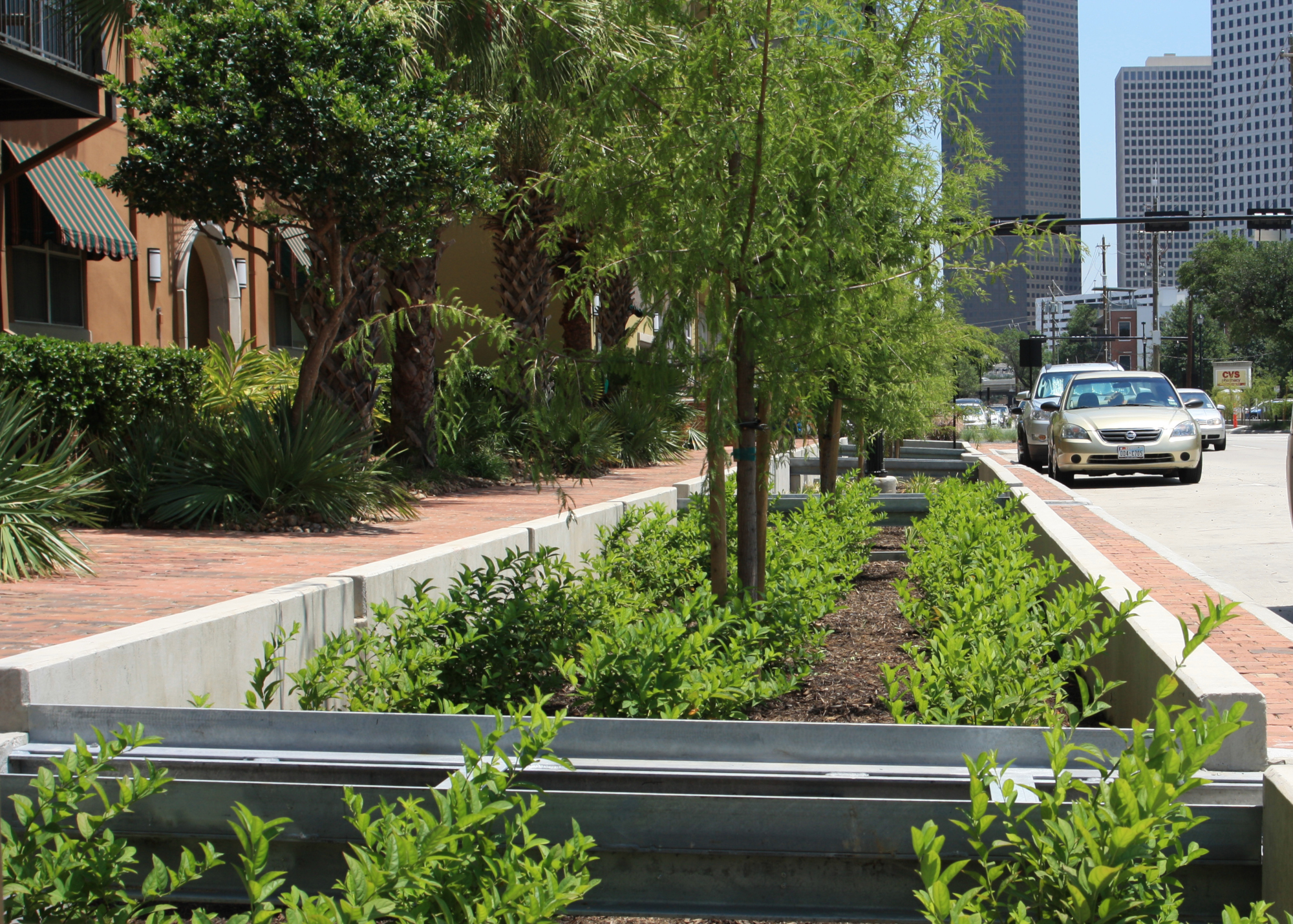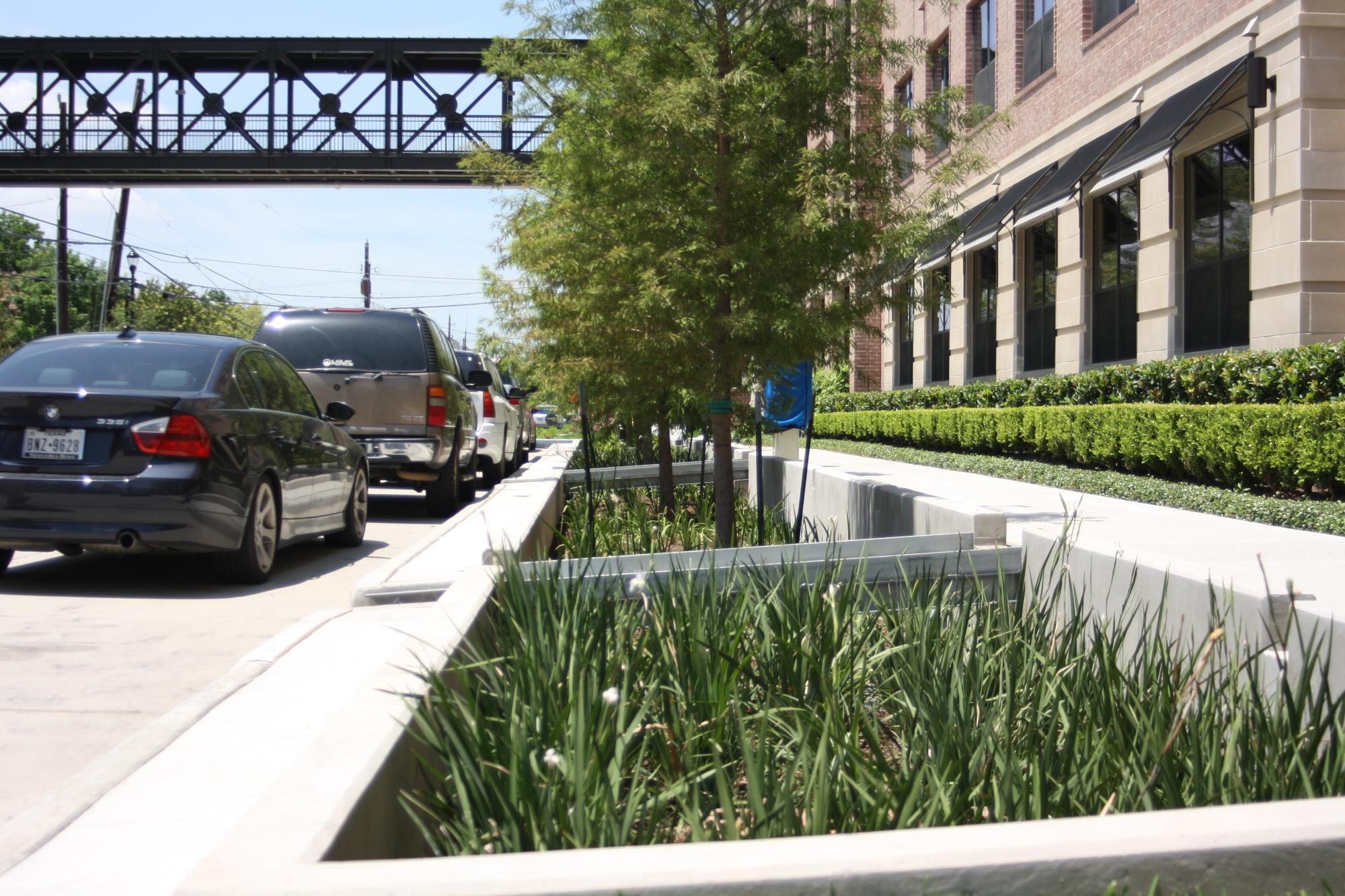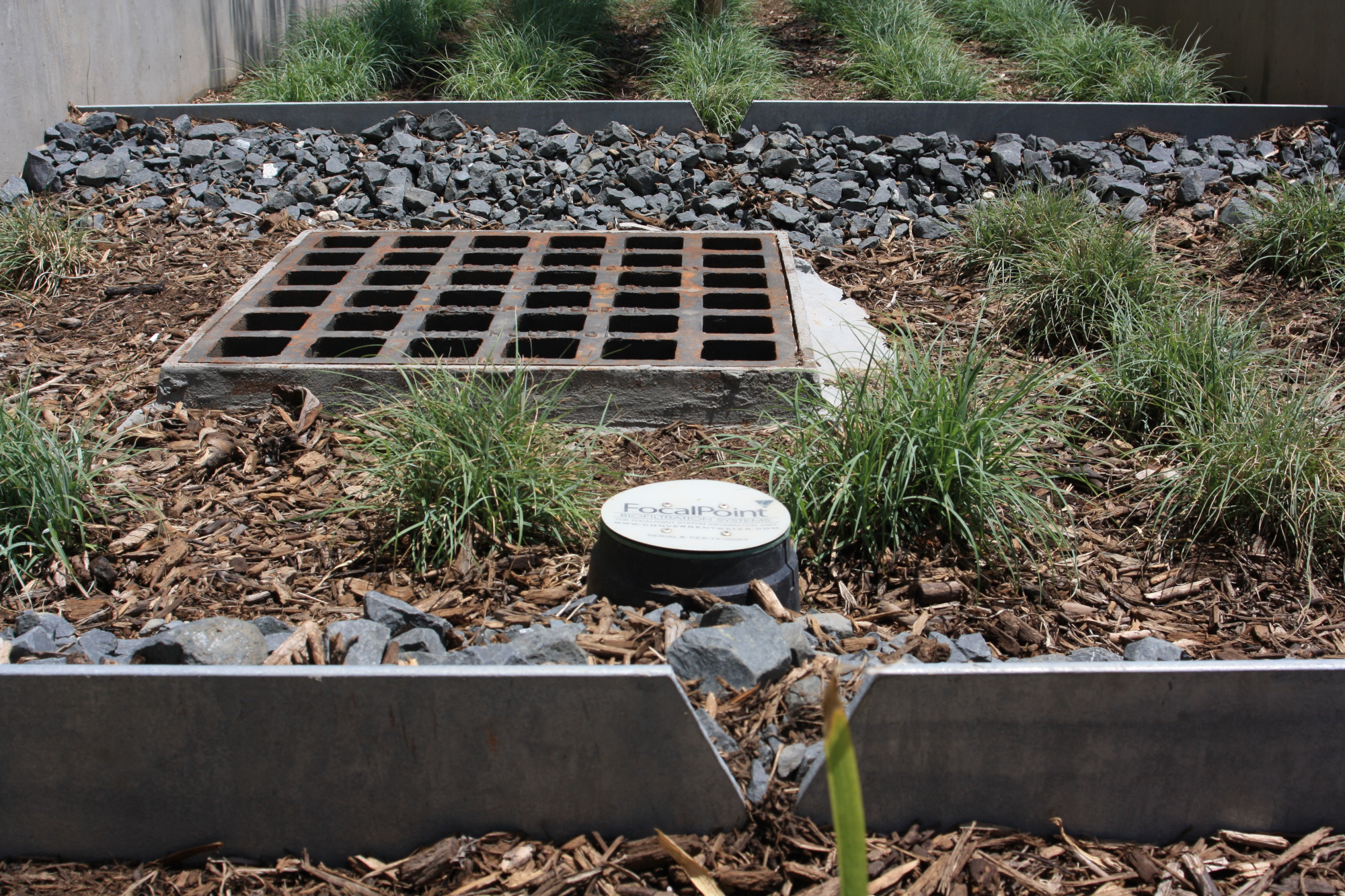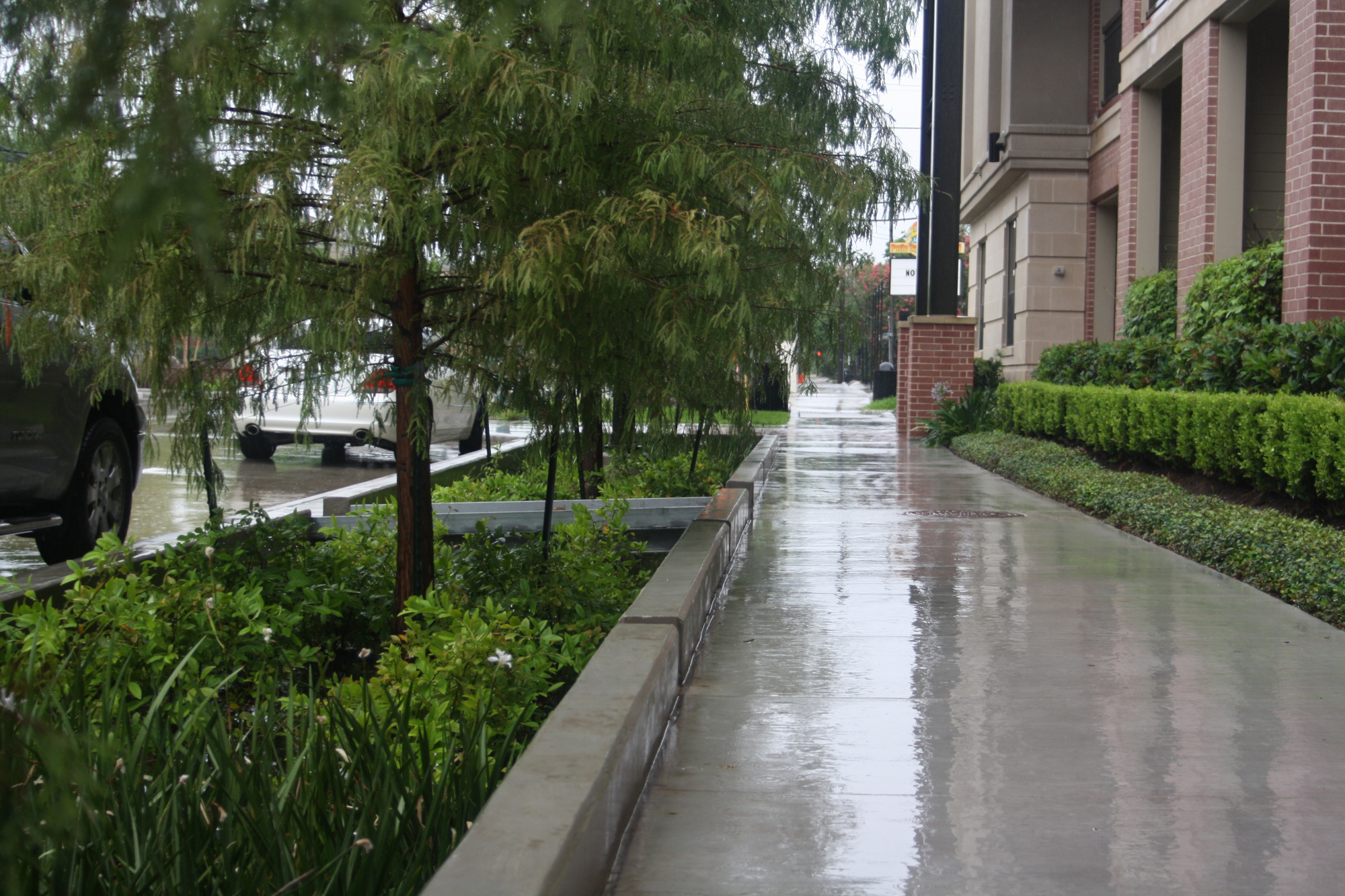
Midtown Redevelopment
Project Background
The newly redeveloped Bagby street in the Midtown District of Houston Texas will improve mobility for vehicles and pedestrians alike, while greatly adding to the aesthetic appeal of the roadway. Landscaped planter boxes, paver sidewalks, and hardwood seating areas along the route are just a few of the additions that add to the pedestrian experience. Not only is Bagby aesthetically appealing, it is also environmentally friendly and is one of Texas’ first certified Greenroads. The Greenroads rating system was created at the University of Washington as a way to measure a roadway’s sustainability features similar to the way the United States Green Building Council’s LEED program measures the sustainability of buildings. The primary feature that makes Bagby Street a Greenroads design is a series of biofiltration planter boxes that line both sides of Bagby street and collect stormwater runoff, storing it and filtering it through FocalPoint High Performance Modular Biofiltration systems (HPMBS).
Why FocalPoint HPMBS?
One of the critical design goals of Design Workshop and Walter P. Moore was to provide street trees within the right of way while also removing pollutants such as heavy metals, floatables, sediment and oil and grease from the roadway stormwater runoff before it outfalls to nearby Buffalo Bayou. Due to the robust root system of most street trees, the design team was concerned that placing these trees in a typical biofiltration planter box would lead to the root system damaging the underdrain of the biofiltration system and clogging it, causing the planters to flood. They knew that the optimal solution would be to place the biofiltration area outside the drip zone of the street trees and because of this decided to employ the high performance small footprint FocalPoint HPMBS.
Because of the FocalPoint HPMBS high flow-rate engineered media, the design team didn’t need to fill the entire planter box with a bioretention media and underdrain system. Instead, they could place the FocalPoint HPMBS between two v-notch weirs, in an area that required 1/20th of the space a typical biofiltration system. This placed the HPMBS away from the tree roots and allowed the design team to meet their two primary goals by having street trees and biofiltration.





